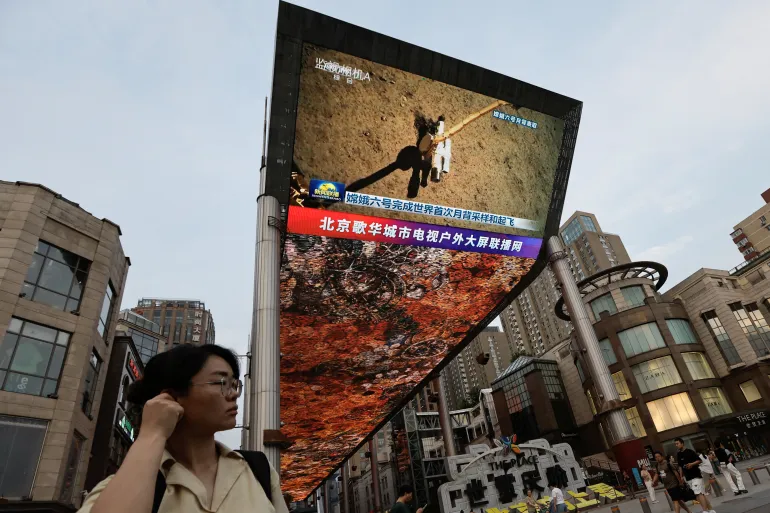In a landmark achievement, China’s Chang’e-6 lunar probe has returned to Earth carrying samples from the far side of the moon.
The Chinese space probe landed in China’s northern region of Inner Mongolia on Tuesday, June 25, 2024.
The return of the lunar material wraps up a highly successful mission for the China National Space Administration (CNSA) and makes China the first country to gather samples from the far side of the moon and bring them back to Earth.
The US, China and the former Soviet Union have gathered samples from the near side of the moon but China is the first to bring material home from the far side.
China previously collaborated with international scientists to study samples it brought back from the near side of the moon but it is unclear whether similar access will be granted to the new material from the far side.
The Chang’e-6 mission, named after the Chinese moon goddess, blasted off from Hainan province in south China on May 3, 2024 and touched down on June 2, 2024, on the side of the moon that is never seen from Earth.
The mission’s lander spent two days collecting rock and soil from one of the oldest and largest craters on the moon, the 1,600-mile-wide South Pole-Aitken (SPA) basin, using a robotic arm and drill.
After setting off from the lunar surface using its own launcher, the spacecraft was guided by a relay satellite on its way back.
The China National Space Administration described the mission as “a complete success” and said the probe is functioning normally.
“A Real Technological Feat”
Martin Barstow, a Professor of astrophysics and space science at the University of Leicester, said, “This is a great achievement by China.”
“Recovering any samples from the moon is difficult, but doing so from the far side, where communications are particularly difficult is a step taken by no other agency,” the Professor stated.
“A real technological feat,” He added.
“Recovering samples from the far side is tremendously exciting scientifically, as we only have very limited information on the geology there.
“It has been processed very differently to the side of the moon facing us, which has been extensively resurfaced by volcanic activity in the past, creating the maria from which most samples have been obtained.”
Martin Barstow
Additionally, Dr Simeon Barber, a senior research fellow at the Open University, said, “We’re entering a new era of discovery.”
He added that getting samples returned from the far side is a milestone achievement that will help scientists to understand the geological history in that region, and why it differs so markedly from the more familiar near side.
“Specialised laboratories around the world have spent five decades finessing the analytical techniques to tease out the moon’s secrets from within near side samples returned by the Apollo and Luna missions. And now we are on the cusp of applying all that expertise to learn about the enigmatic far side of our nearest neighbour in space.”
Dr Simeon Barber
The latest samples could shed light on longstanding mysteries in the early history of the moon and Earth.
The samples are expected to provide scientists from China and around the world with new insights into the formation of the solar system and differences between the far side of the moon and its more familiar Earth-facing side.
China has more lunar missions planned this decade.
They are intended to pave the way for an International Lunar Research base, which it will co-lead with Roscosmos, the Russian space agency, and the eventual landing of a Chinese astronaut on the moon.
READ ALSO: BoG Permits Banks with Strong Capital Positions to Pay Interim Dividends




















